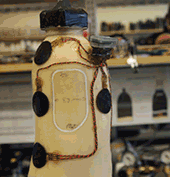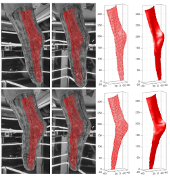Automatic control of prosthetic socket size for people with transtibial amputation: Implementation and Evaluation
https://www.embs.org/tbme/wp-content/uploads/sites/19/2020/12/TBME-01466-2019-Highlight-Image.gif
170
177
IEEE Transactions on Biomedical Engineering (TBME)
//www.embs.org/tbme/wp-content/uploads/sites/19/2022/06/ieee-tbme-logo2x.png
People wearing a lower leg prosthesis often experience discomfort or pain during the day because of changes in socket fit. To solve this problem, we created a motor-actuated prosthetic socket that automatically maintains socket fit by continuous adjustment of the socket size. A proportional-integral (PI) control system is implemented to adjust socket size based on data collected from an inductive sensor embedded within the socket wall. The sensed distance is representative of limb-to-socket distance. Experiments on participants with transtibial limb amputation verify that the system properly maintains and responds to a change in set point to maintain socket fit.
read more


